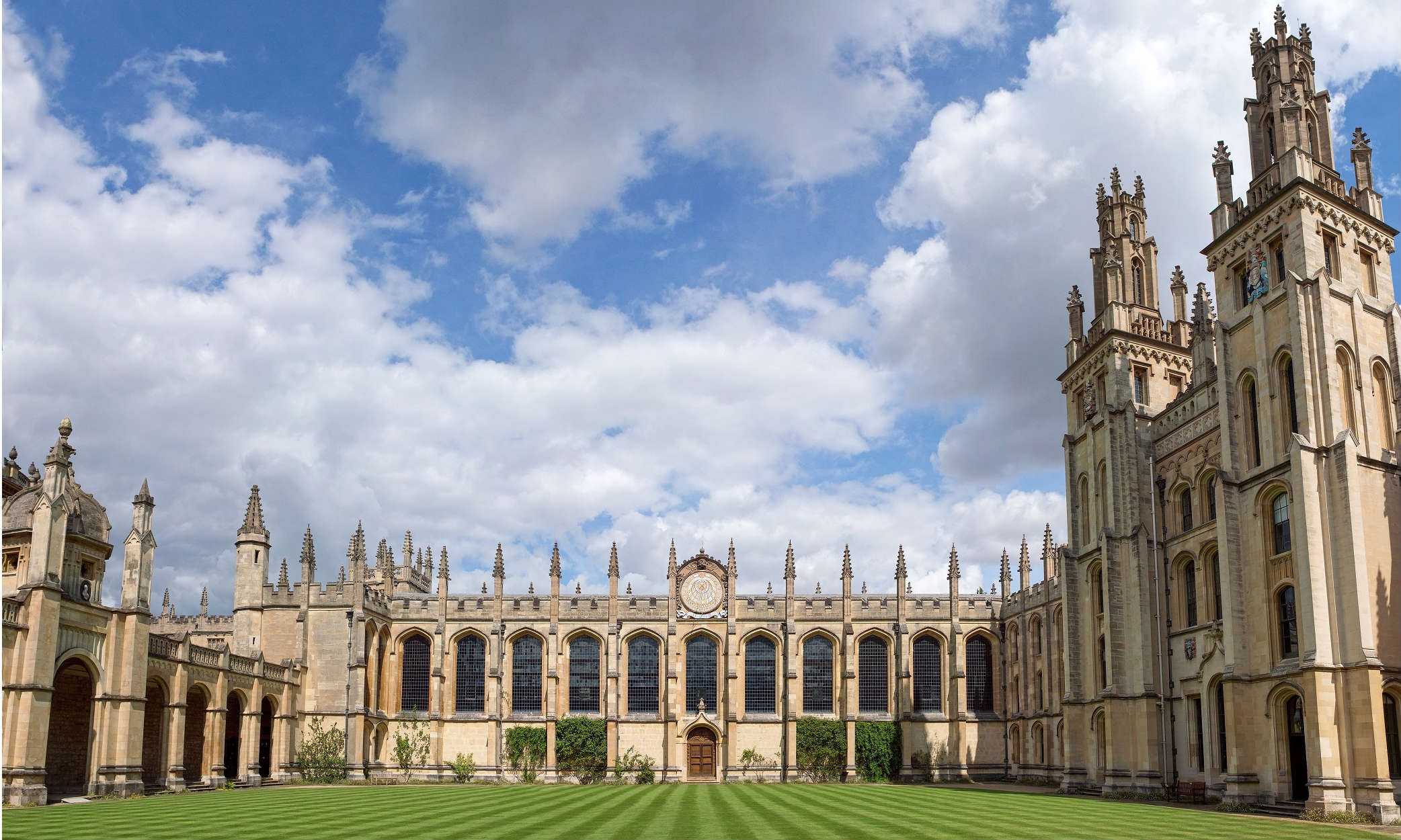Executive Alarms have installed ACT access control equipment at All Souls College, University of Oxford. The College was founded in 1438 and one of the main challenges was to safeguard people and property without effecting the visual appeal of buildings from the reign of Henry VI.
All Souls is benefiting from the latest version of ACT’s management software, ACTenterprise. This is a role-based platform with functionality available to users according to their specific needs (e.g. installer, security guard, system administrator) and which offers operators the look and feel of a web browser experience.
Fellows and staff at the College are using ACT’s own contactless smart cards with the ACTpro MIFARE 1030 proximity reader. Crucially, this is a slim-line mullion reader and for the All Souls project, ACT used their 1030PM brass finish (usually associated with audio entry panels) and designed a flush plate in solid brass which is fitted to walls near doorways in order to blend with stone dressings that can date back to 1440. The ACTPro 1030 unit is suitable for both indoor and outdoor installation.
Richard Huison of ACT said: “It was crucial that our equipment did not disturb the aesthetic appearance of the site. The client sets a premium on access control but does not want it to be overt. ACT worked with Executive Alarms to ‘piggy-back’ any conduit needed for our units with existing structured cabling wherever possible.
He continued: “The fact that the controllers are IP units meant the installation neither disrupted the research activity of the fellows at the college nor compromised the integrity of the buildings. The minimal amount of cabling needed has been hidden in mortar lines by skilled stone masons.”
The ACTpro 1520 single-door IP controllers used in Oxford are expandable up to 32 doors through use of ACT door stations. ACT’s range of door stations offers break glass monitoring, reader short circuit protection, voltage monitoring and anti-passback. Faults are reported on a web interface and the ACTenterprise software.
All Souls is an integral part of the University of Oxford but the college has no undergraduates and is predominantly a graduate research institution with particular strengths in the humanities and social and theoretical sciences. The College is outward-facing and has always been known for ties with people in public life. Although its Fellows are involved in teaching and supervision of research, there are no undergraduate members.
The ACT equipment is in many parts of the college including the Codrington Library whose holdings are noted for law, history, philosophy and sociology. There are over 185,000 items of which a third were published in the eighteen century or earlier. Building of the library (initially known as ‘The Great Library’) began in 1716 with the original plan having been carried out by
The Codrington Library at All Souls College, Oxford, is not only architecturally interesting in itself, but also has a distinctive place in the history of library design. The building of the Great Library started on June 21, 1716, to a plan by Nicholas Hawksmoor (1661-1736).
Hawksmoor is celebrated for his work on churches in central and east London as well as his collaborations as a young man with Sir Christopher Wren after the Great Fire of London. Full furbishing of the Library at All Souls such that it could accommodate books was only completed in 1751 and not all design aspects of Hawksmoor’s original concept were realised as he had intended. The Wren theme continues in so far as the artefacts in the Library include a death mask of the architect.
Fellows of the College include or have included philosopher Sir Isaiah Berlin, the politician Keith Joseph (cabinet member under Margaret Thatcher), John Redwood (cabinet member under John Major), Cosmo Gordon Lang (Archbishop of Canterbury 1928-1942) and T.E. Lawrence (more commonly known as ‘Lawrence of Arabia’.) The College holds much memorabilia pertaining to Lawrence who was famously played on screen by the late Peter O’Toole in David Lean’s 1962 epic historical drama.
While a building as old as All Souls is an unusual commission for ACT, the company has much experience of the heritage architectural environment and a recent project in Cyprus involved a Victorian building. ACT also has a track record of working in centres of academic excellence and has installed its equipment at the Hunterian Museum in Lincoln’s Inn Fields, London. This building dates from 1796 and the museum forms part of the Royal College of Surgeons. The museum has been open to visitors since 1813.
Other commissions in further education performed by ACT include installation of proximity readers and door controllers at the University of Gdansk, Poland, where the company went to exceptional lengths to accommodate the needs of students with impaired mobility. ACT’s readers are also in use in many parts of the campus of the University of Sussex (Grade I and Grade II listed) with areas covered including the library. Sheffield College is an ongoing project for ACT across a triple-site campus. Facility managers use door controllers and management software and were among the first clients to adopt ACT’s eLocks. ACT software was also adapted to function seamlessly along the college’s enrolment system so producing considerable cost savings.
ACT solutions are used at education facilities of all sizes from rural primary schools to sixth form colleges, from vocational training centres to multi-campus and collegiate universities. The products identify and screen staff and visitors as well as protecting students, securing equipment in laboratories and safeguarding intellectual property.
Oxford-based Executive Alarms who carried out the work at All Souls was founded in 1990 and excels in commercial and residential security across access control, CCTV, intruder alarms and fire protection. Many customers have been with the company since its inception. Executive Alarms is a member of the SSAIB and offers a 24/7/365 call-out service with all its engineers being CRB checked. The company is skilled in responding with appropriate system designs for listed buildings and projects of major architectural significance such as the work described here in Oxford.


